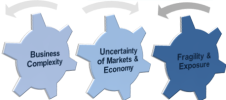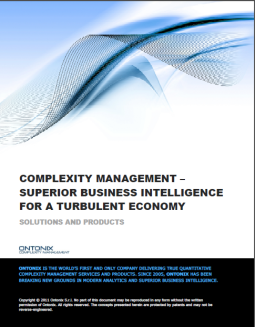We Selected the Simple Solution. The Complex Solution Became a Worldwide Standard – Part I
Wednesday, 29 May, 2013 Leave a comment
A solution that has been designed in an environment with low levels of complexity can be the cause of failure when:
- the solution is implemented in an environment with high levels of complexity;
- the solution itself is extended and becomes too complex; or
- the solution remains the same but the surrounding environment exceeds a certain level of complexity
Leading in a Complex Environment
Does this sound familiar? You have an effective solution to a complex challenge. But when you try to get it accepted, you find that it differs too much from the way solutions are expected to look. Creating openness to the unconventional solution seems an insurmountable challenge. Here is an example that may help you.
My quest for solutions to complex challenges started around 1988 while I was working for a data centre. Management recognized that, with increasing complexity, we were losing the overview: With every change we made, and every problem we tried to solve, we were in danger of creating new problems. I was asked to investigate a solution.
At the time, we used a software tool for problem and change management. The tool worked well. It had an unused module and it looked the solution to our challenge was a matter of bringing the module in production. This…
View original post 495 more words












